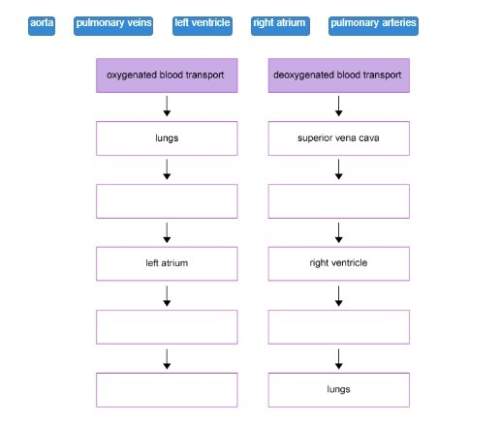
Biology, 05.05.2020 13:27 issaaamiaaa15
The following table shows the period of revolution of some unknown planets of equal mass. Period of Revolution Planet Period of Revolution W 1.9 years X 11.8 years Which of the following best explains which planet is farther from the sun? Planet W, because gravity is inversely proportional to the square of distance Planet X, because gravity is inversely proportional to the square of distance Planet X, because the sun exerts a greater gravitational force on it than on planet W Planet W, because the sun exerts a greater gravitational force on it than on planet X

Answers: 1


Another question on Biology

Biology, 21.06.2019 23:30
What are some possible short and long term medical concerns for crew members on longer space exploration trips
Answers: 3

Biology, 22.06.2019 01:30
Scenario 5 1) take 10 red and 10 black beans and place them, mixed, on the table. record the starting phenotype # and frequencies (% of your total population) of your starting population in the table provided (generation 0). 2) act as a predator. “capture” as many organisms as you can until you have reduced the population to three organisms. put them aside. at this point, the predators die. 3) the remaining organisms each produce 2 clonal offspring. multiply your organisms accordingly and allow them to mix on the table. calculate and record the resultant phenotype # and frequencies (% of your total population) of your population in the table provided (generation 1). 4) repeat the reproduction event, allowing each of your organisms to produce 2 clonal offspring. calculate and record the resultant phenotype # and frequencies (% of your total population) of your population in the table provided (generation 2). 5) repeat the reproduction event, allowing each of your organisms to produce 2 clonal offspring. calculate and record the resultant phenotype # and frequencies (% of your total population) of your population in the table provided (generation 3).
Answers: 1

Biology, 22.06.2019 03:30
Students in biology are studying the macromolecules of life. they used a calorimeter to determine the calories in various types of food. once the lab was completed, the students ate the left over food samples. monica commented that in just 6 or 7 "chews" of the saltine, it was gone; nothing but a sticky paste in her mouth. elaborate on what happened chemically while chewing the saltine. include the macromolecules present.
Answers: 1

Biology, 22.06.2019 05:00
Which mechanism of transport takes place when solute particles move from a region of high concentration to a region of low concentration? active diffusion isotonic osmosis
Answers: 2
You know the right answer?
The following table shows the period of revolution of some unknown planets of equal mass. Period of...
Questions


Computers and Technology, 09.12.2021 16:40



Geography, 09.12.2021 16:40


Social Studies, 09.12.2021 16:40


Business, 09.12.2021 16:40




Computers and Technology, 09.12.2021 16:40

Health, 09.12.2021 16:40



History, 09.12.2021 16:40

English, 09.12.2021 16:40

French, 09.12.2021 16:40




